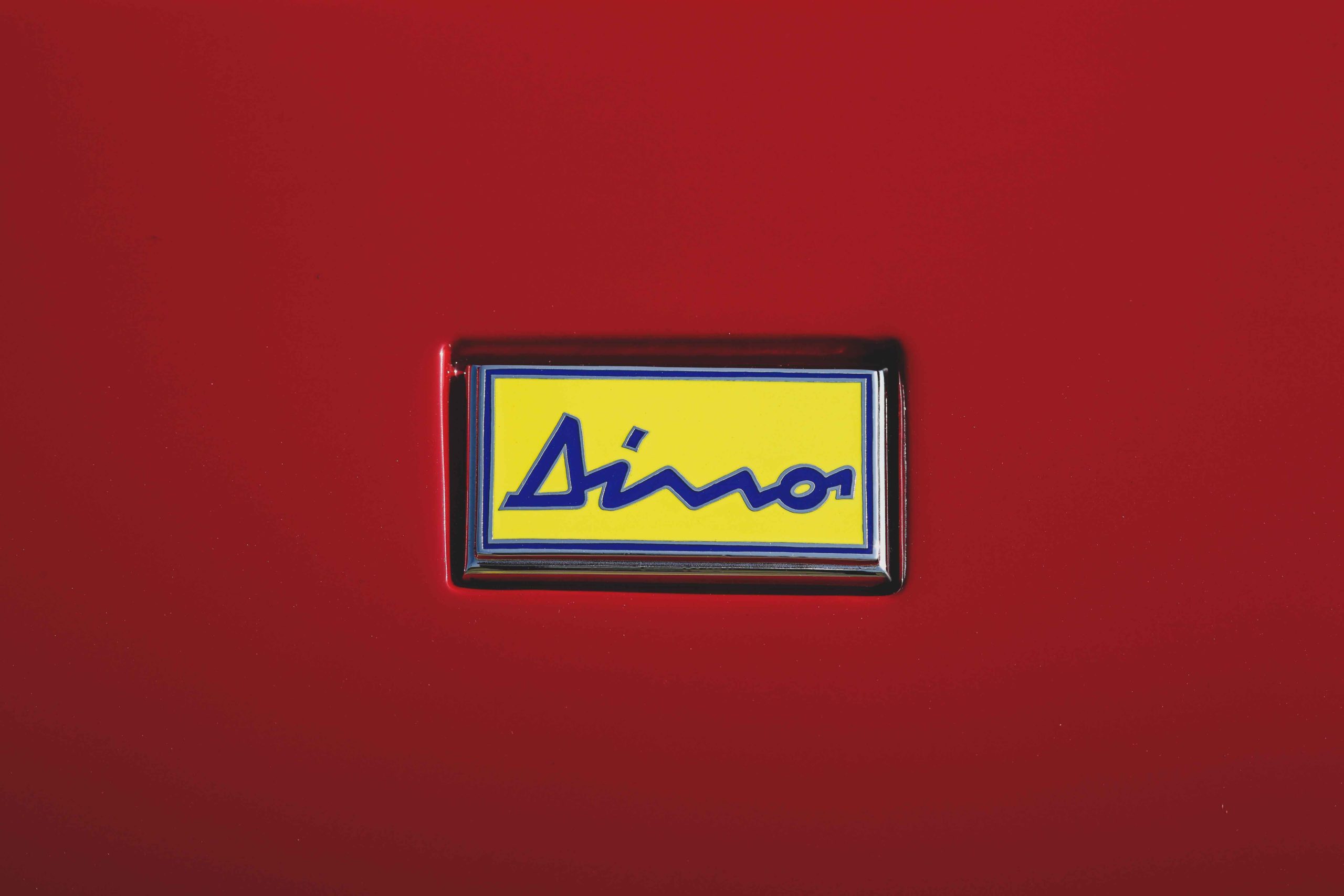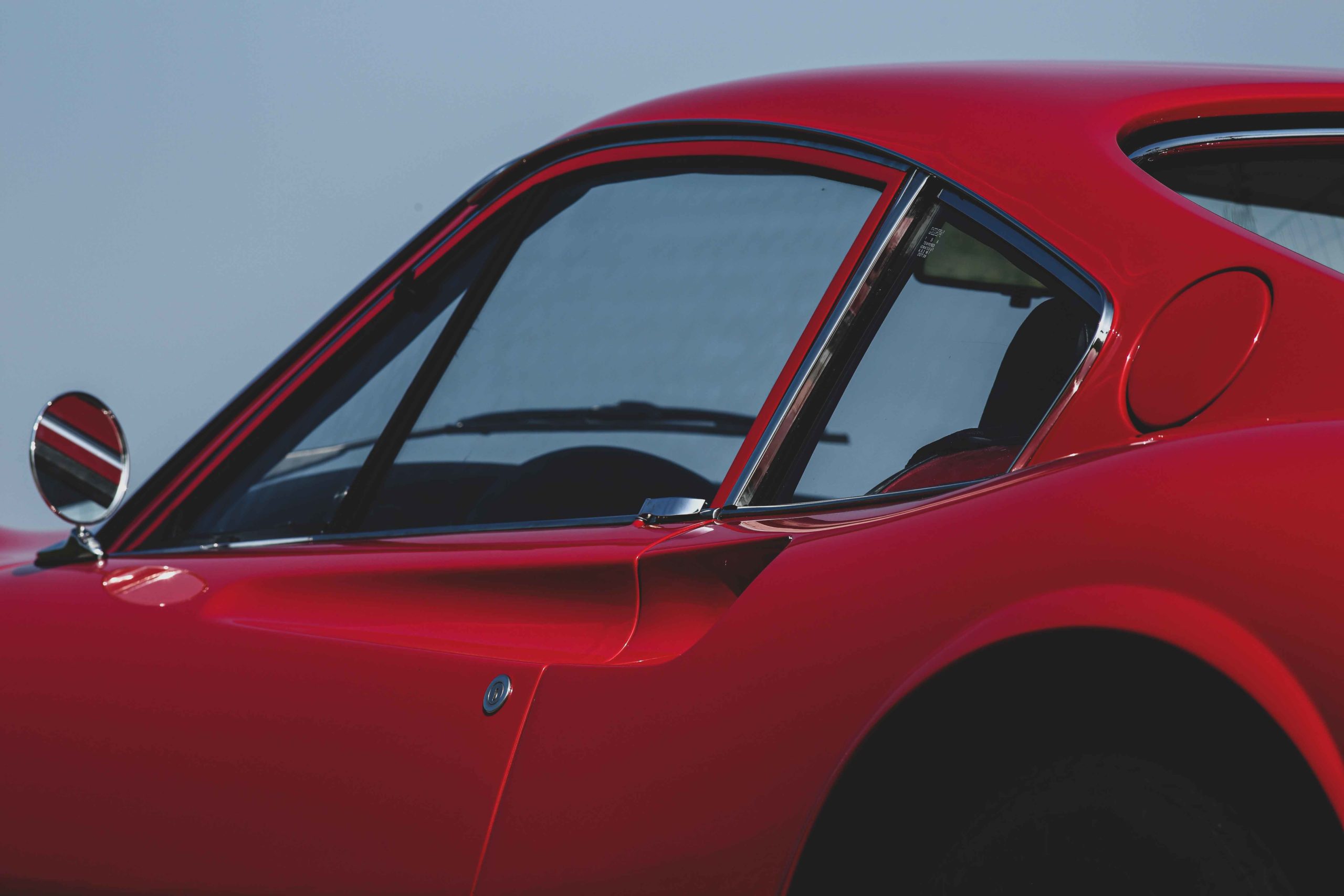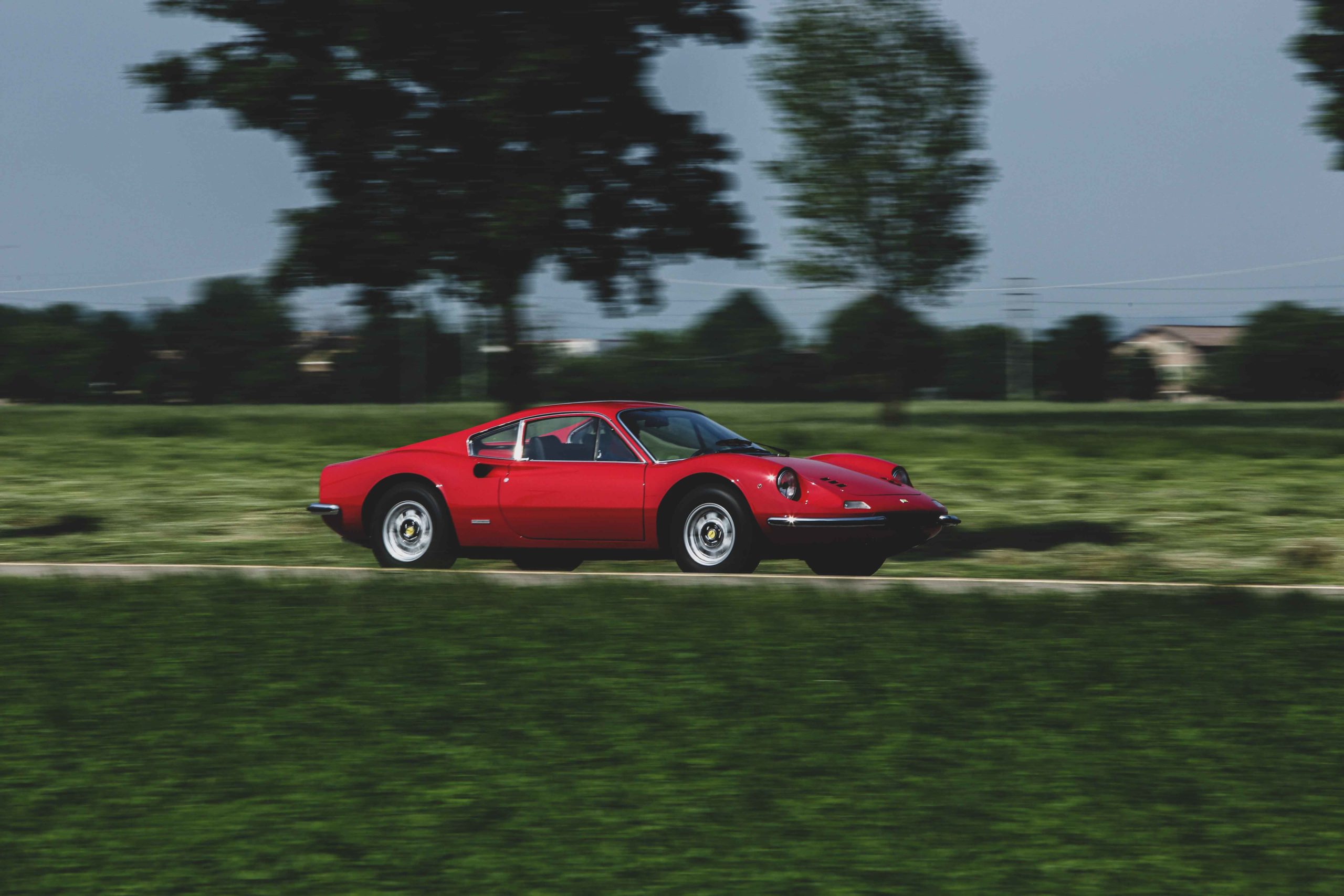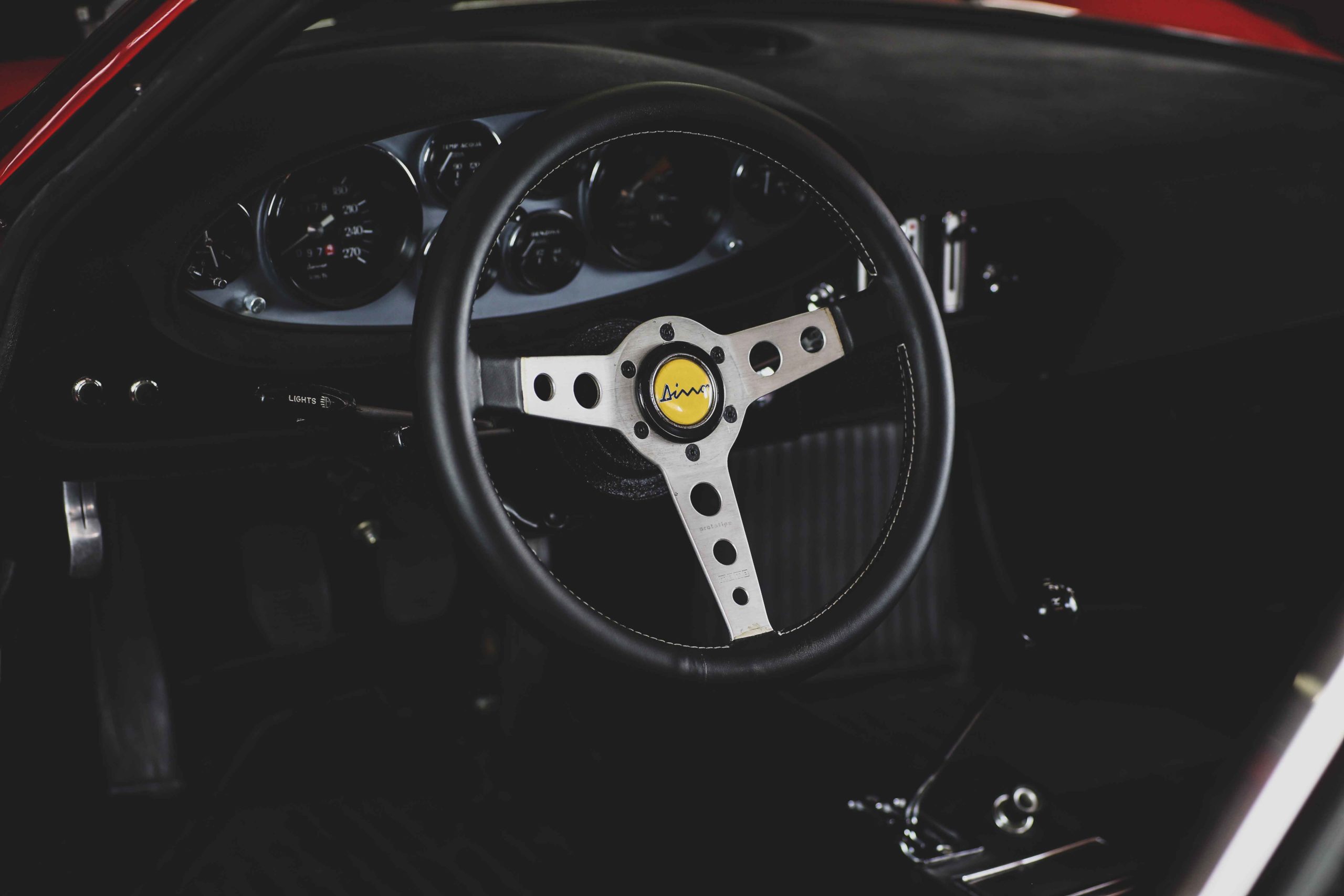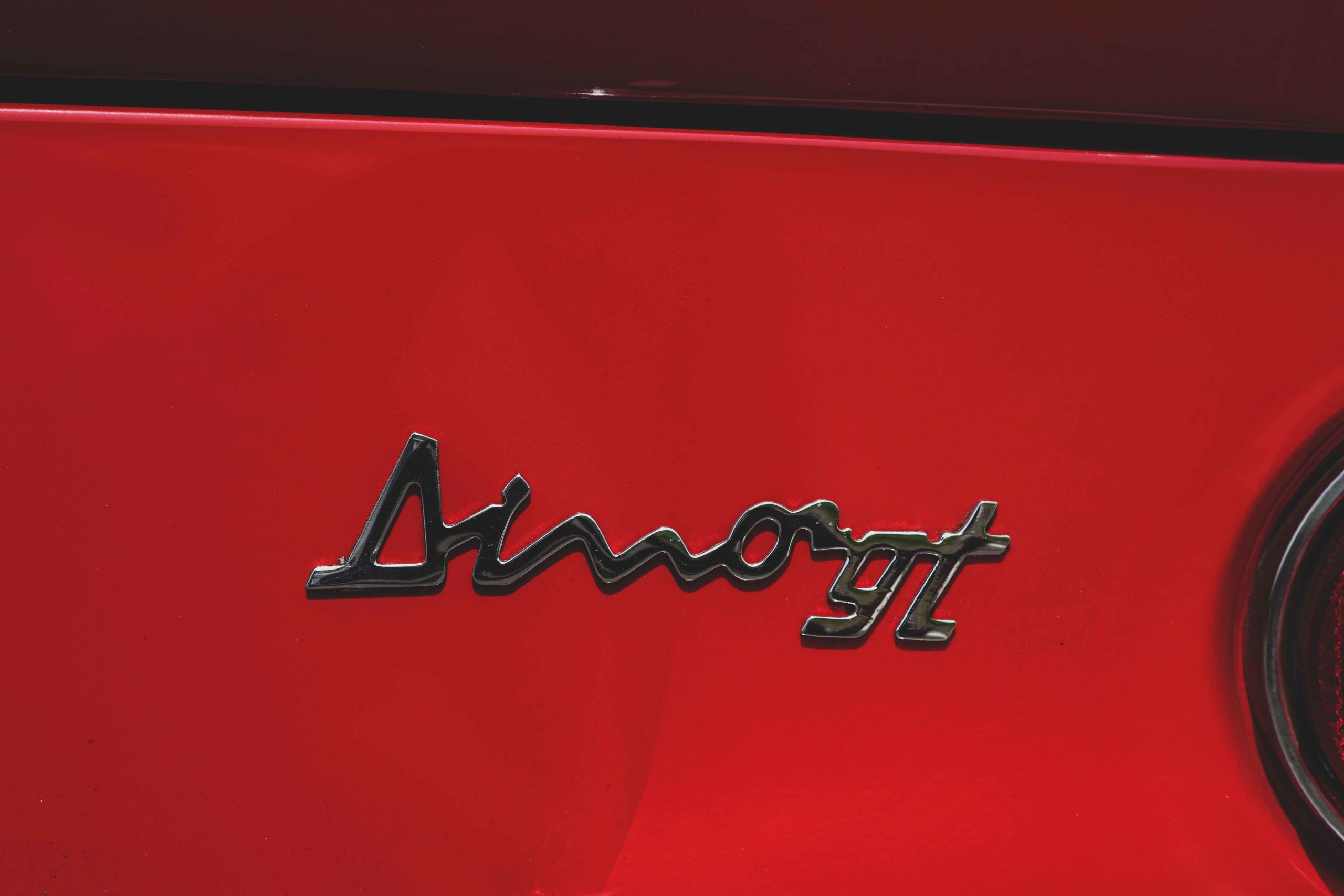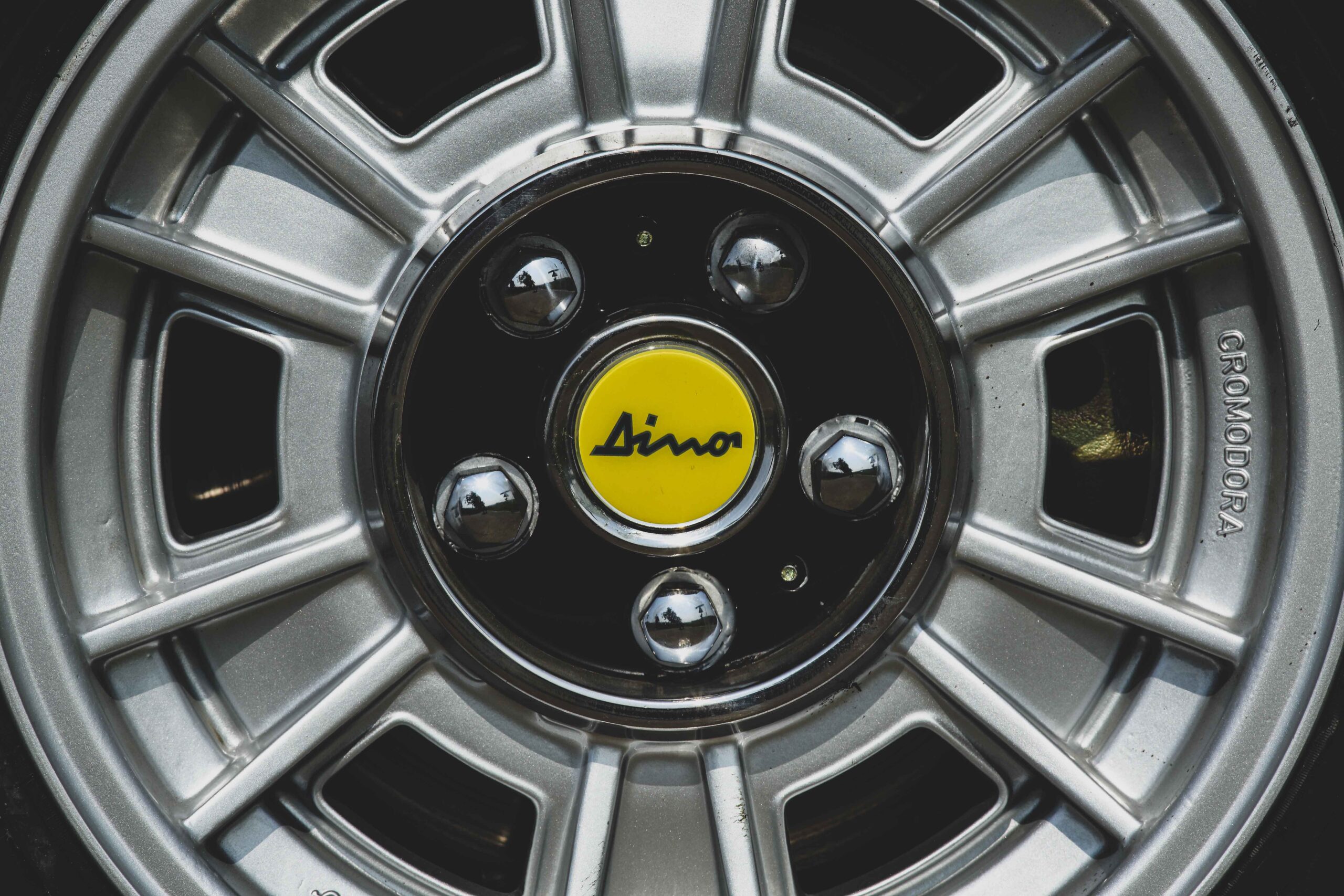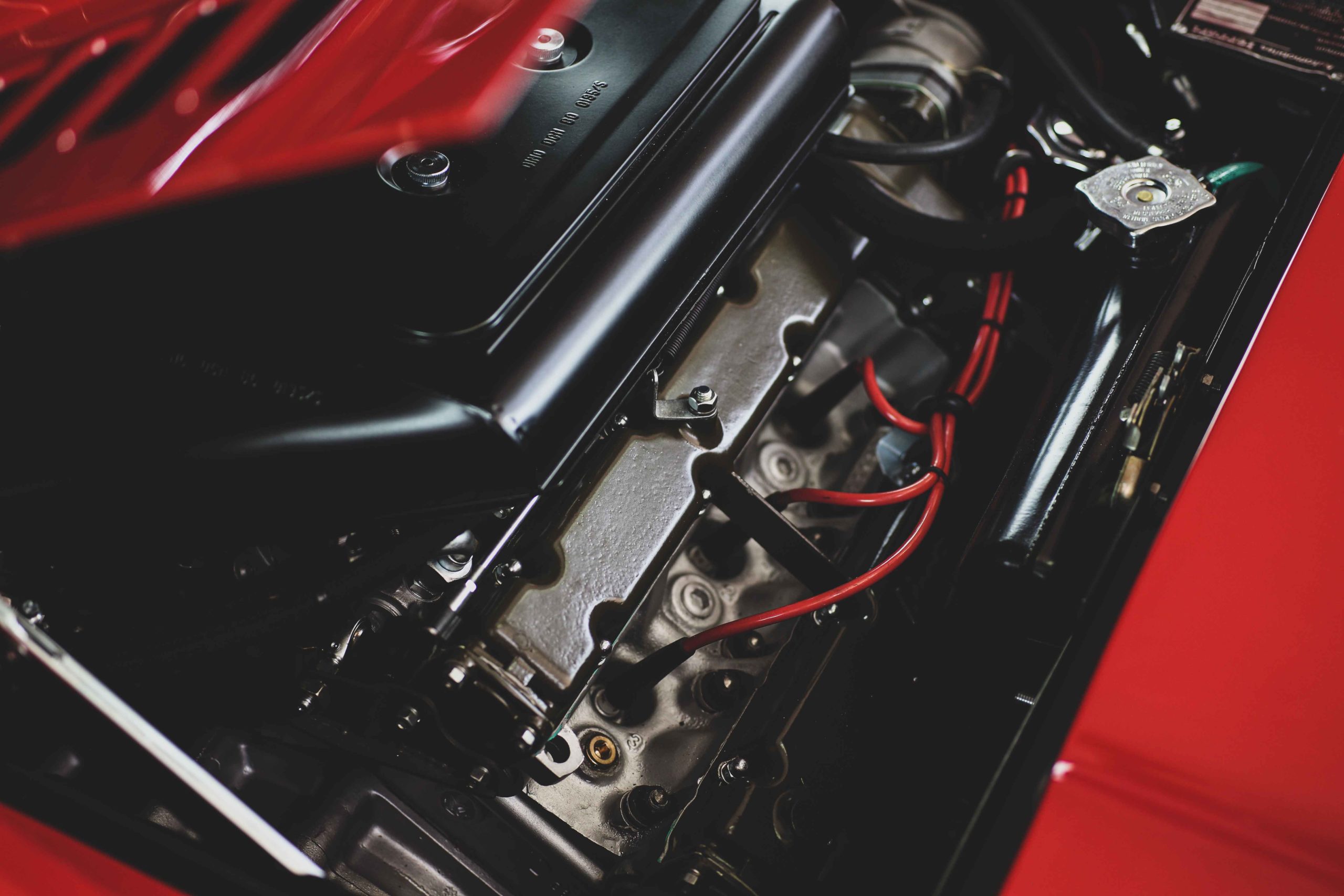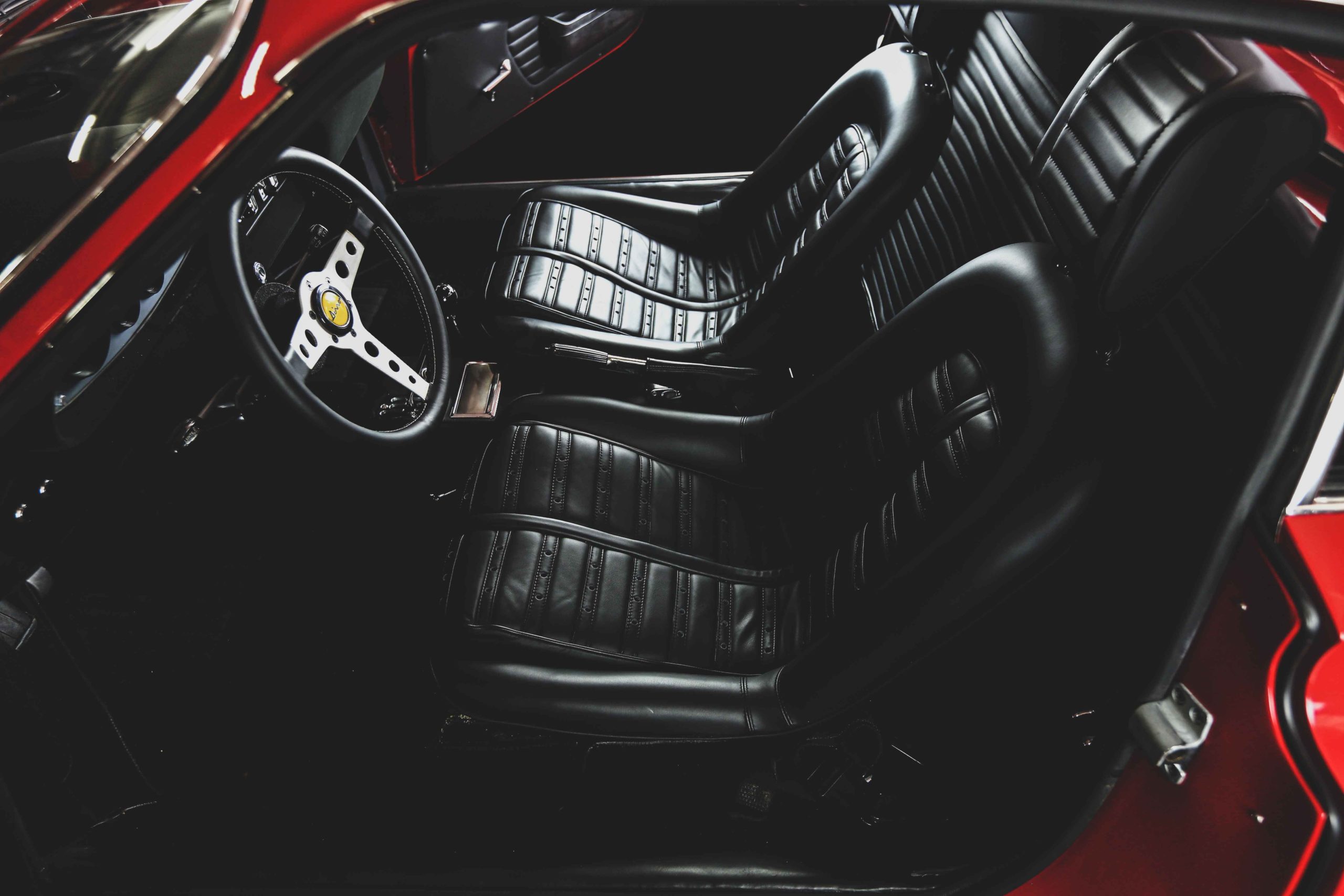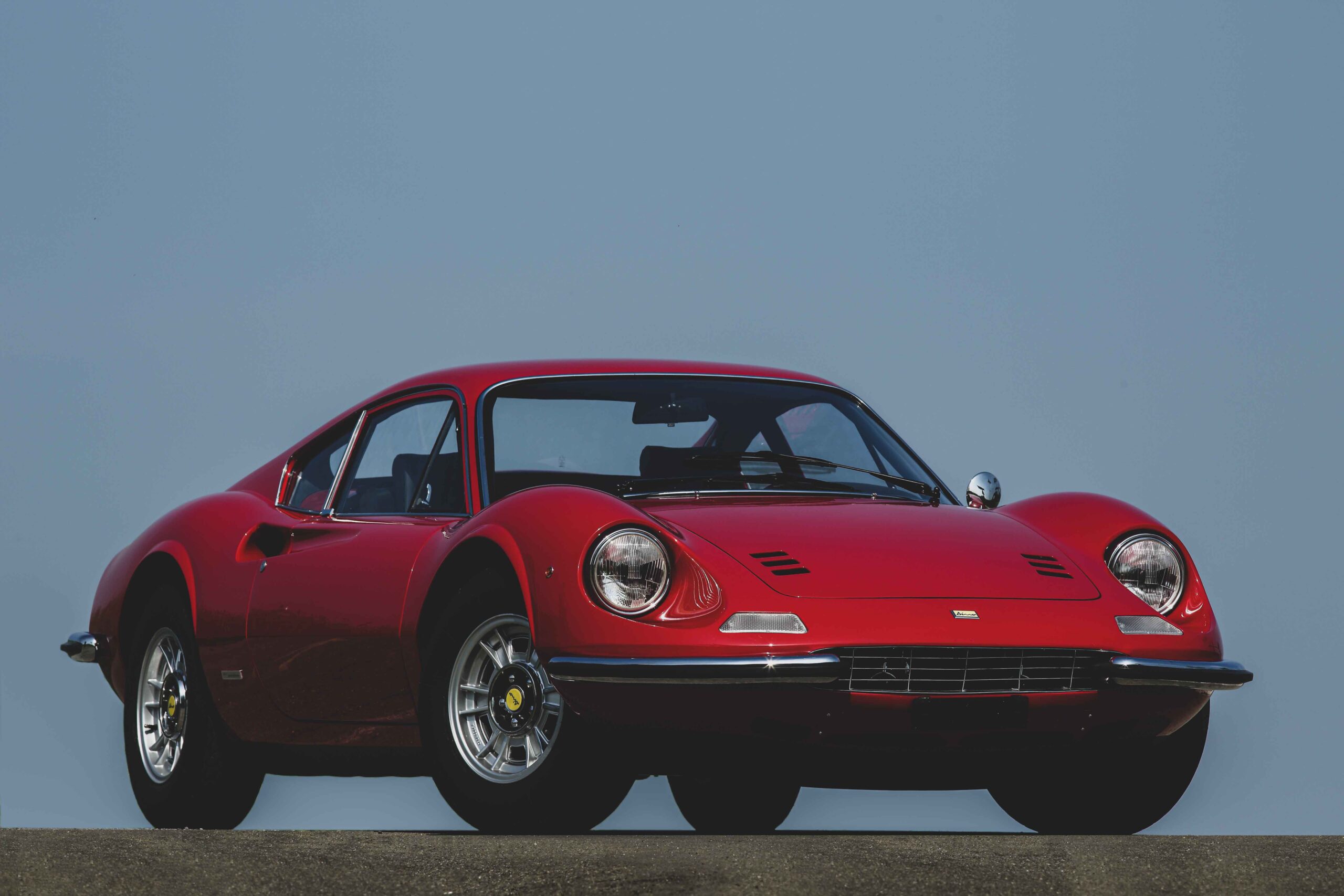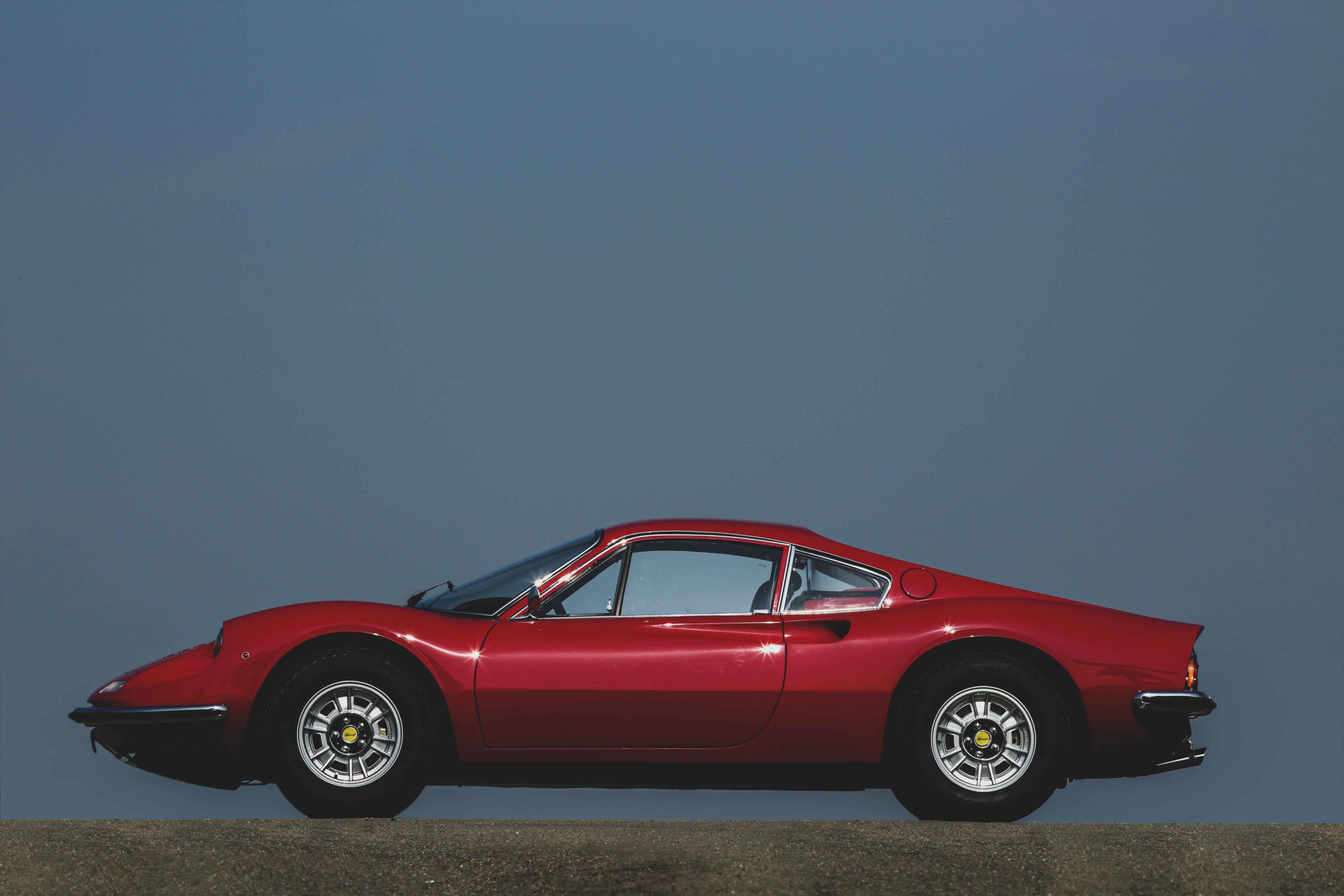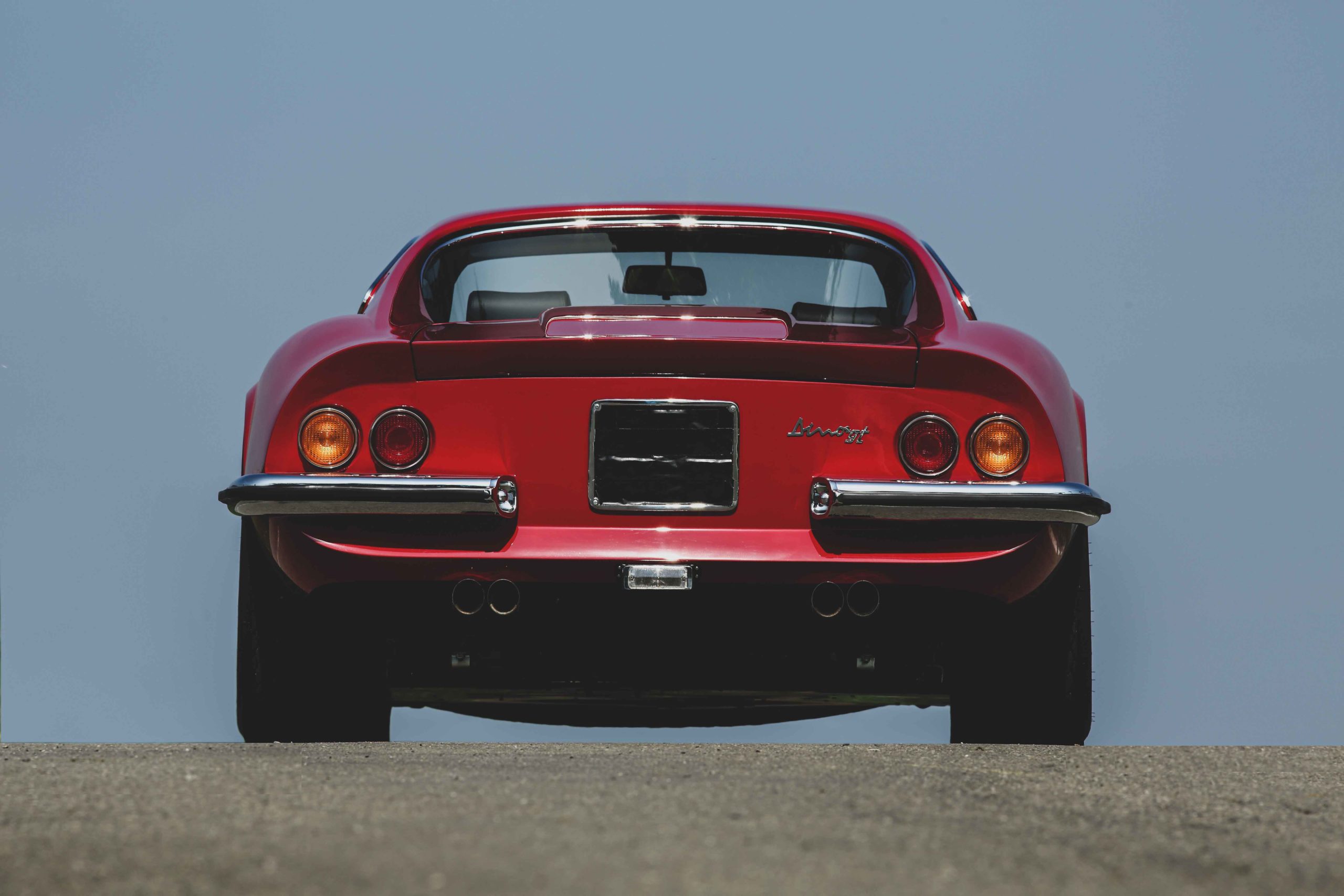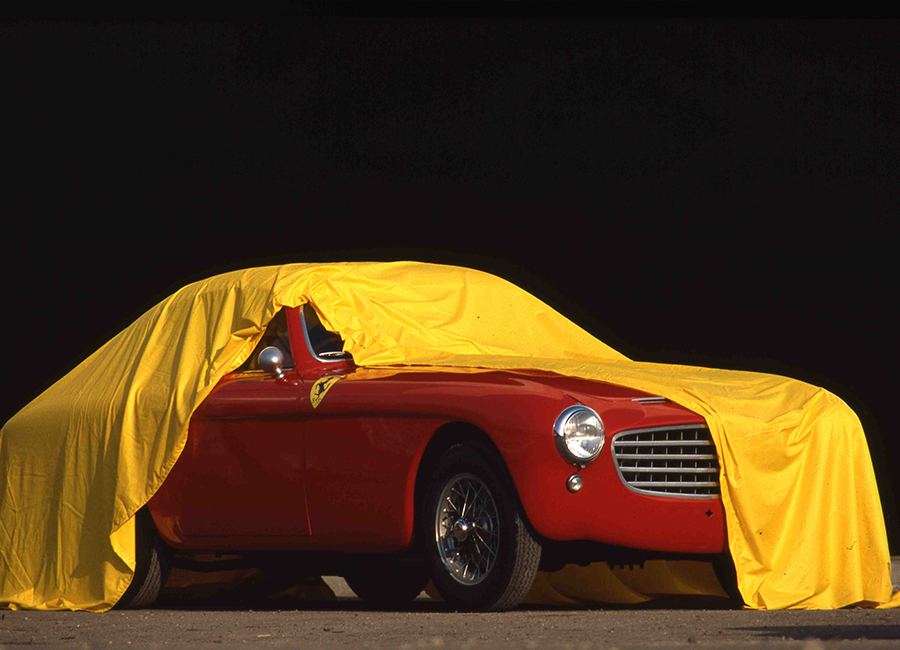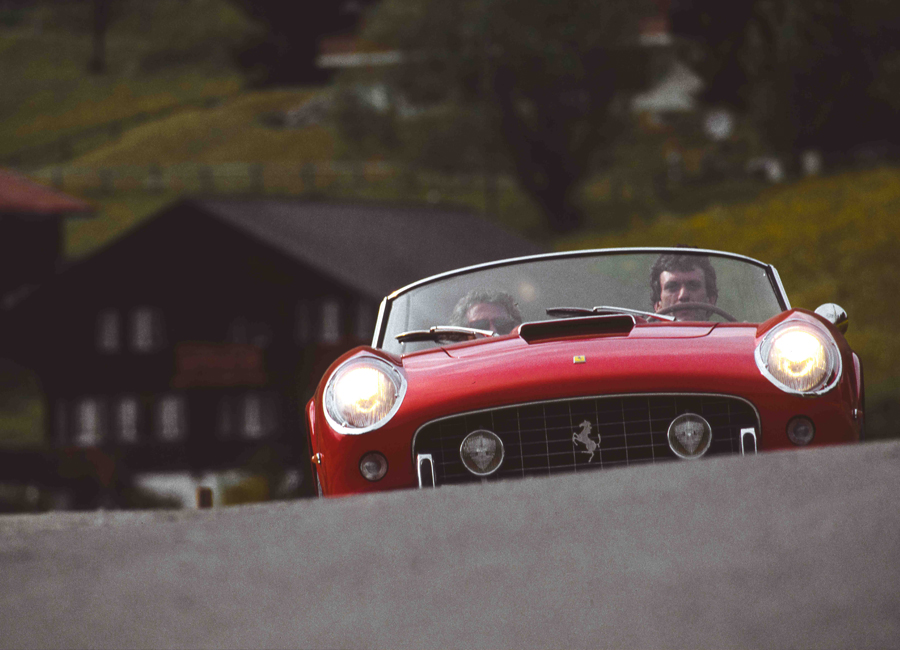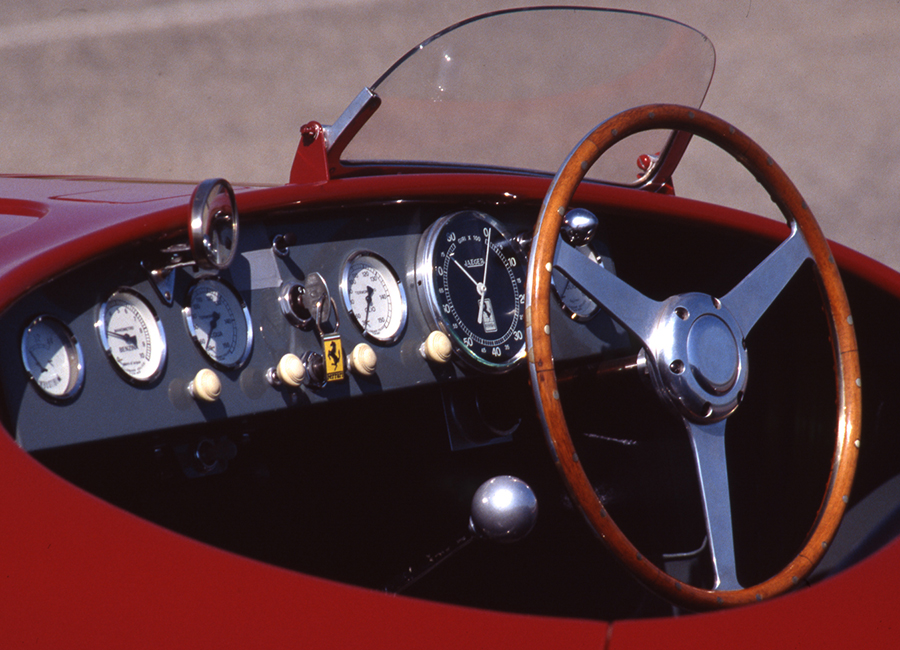DINO, FIAT-FERRARI MARRIAGE
A period of change and innovation began at Ferrari with the six-cylinder Dino, which marked the introduction of a series production engine other than the classic V12 and also a change regarding the shareholding structure of the brand. It all was due to the requirement of having the means to produce at least 500 units to be allowed by the FIA to participate at the F2 World Championship. Indeed, in 1967 FIA regulations permitted at Factorys to entered the races if only they have built a “little series” of that engine used for competition.
There was just one chance for Ferrari to supply FIA’s requisite: a strong partnership with an “Automotive giant”. He tabulated a negotiation with Ford in the USA but, for a conflict item regarding races, the Great Enzo refused the offer. The other Cars Company with which he was in contact was the Fabbrica Italiana Automobili Torino, owned by the wealthy Agnelli family. The 1967 206 Dino model was the car that signed the marriage between Ferrari and FIAT, which heralded the later arrival of the Turin Brand as a purchaser of 50 per cent of the Ferrari shares in early 1969.
This car also introduced a new model designation: instead of the single-cylinder capacity (used previously by Ferrari as for the 166 model and 250 series) with Dino has been started the nomenclature matching the total capacity with the number of cylinders. Indeed 206 is the “acronym” of 2.0 liter 6 cylinder. There was another clear chance, the typical black Prancing Horse on the front was gone and replaced by a blue “Dino” script on a yellow badge.
Enzo Ferrari built this car using also the works done by the beloved son prematurely dead for muscle disease in 1956. Indeed, Alfredino Ferrari worked with Ing. Vittorio Jano studying and drawing the first 6-cylinder engine used then by Ferrari in competition, the 156 F1. From there the choice to adopt the name “Dino” (a contraction of Alfredino) for the first V6 road-car produced in Maranello in memory of his son. Both Ferrari and FIAT produced cars with the V6 engine: at the production beginning the engine was the same, built-in Ferrari’s factory and marked by the Dino script – until the arrival of the Dino 2400.
The most important technical innovation introduced on the Dino was the mid-mounted transverse engine layout with a unitary transmission – a layout that was maintained by Ferrari over 20 years through the succeeding eight-cylinder models, only reverting to a longitudinal layout when the 348 model was introduced in 1989.
Dino’s series production started in April 1968 with the 206 GT: just 152 examples of the 2.0 litre were built in total. Dino 246 model was built in 1274 as GTS (Spider version) and 2487 were GT examples. Before arriving at the final shapes of the Dino body style as we know it today, Ferrari and Pininfarina produced 5 prototypes between 1965 and 1967.
The definitive Dino shape, evolving by Aldo Brovarone’s original sketches, became reality when Leonardo Fioravanti added his final touches following his arrival at Pininfarina, wherein 1972 he would become the director of the research centre. A highlight of the Dino body styling was the bulbous front wings, which was a reflection of the period sports prototypes. These blended into the door lines, which had tapered, scalloped sections leading into intakes on the rear wing, feeding air to the engine bay. The typical vertical rear screen back to the cockpit ran down to the Kamm tail panel, winking to the tail of 250 LM.
As the Dino was marked as a separate marque, no Ferrari badging was fitted – all the examples carried only the stylized Dino signature. The V6 era (for road-going “Ferrari”) culminated in 1974, following the end of Dino 246-series production: this layout has since only been used by Ferrari in F1 cars, which is essentially where the story started.
ENGINEROUTE
DINO, FIAT-FERRARI MARRIAGE
A period of change and innovation began at Ferrari with the six-cylinder Dino, which marked the introduction of a series production engine other than the classic V12 and also a change regarding the shareholding structure of the brand. It all was due to the requirement of having the means to produce at least 500 units to be allowed by the FIA to participate at the F2 World Championship. Indeed, in 1967 FIA regulations permitted at Factorys to entered the races if only they have built a “little series” of that engine used for competition.
There was just one chance for Ferrari to supply FIA’s requisite: a strong partnership with an “Automotive giant”. He tabulated a negotiation with Ford in the USA but, for a conflict item regarding races, the Great Enzo refused the offer. The other Cars Company with which he was in contact was the Fabbrica Italiana Automobili Torino, owned by the wealthy Agnelli family. The 1967 206 Dino model was the car that signed the marriage between Ferrari and FIAT, which heralded the later arrival of the Turin Brand as a purchaser of 50 per cent of the Ferrari shares in early 1969.
This car also introduced a new model designation: instead of the single-cylinder capacity (used previously by Ferrari as for the 166 model and 250 series) with Dino has been started the nomenclature matching the total capacity with the number of cylinders. Indeed 206 is the “acronym” of 2.0 litre 6 cylinder. There was another clear chance, the typical black Prancing Horse on the front was gone and replaced by a blue “Dino” script on a yellow badge.
Enzo Ferrari built this car using also the works done by the beloved son prematurely dead for muscle disease in 1956. Indeed, Alfredino Ferrari worked with Ing. Vittorio Jano studying and drawing the first 6-cylinder engine used then by Ferrari in competition, the 156 F1. From there the choice to adopt the name “Dino” (a contraction of Alfredino) for the first V6 road-car produced in Maranello in memory of his son. Both Ferrari and FIAT produced cars with the V6 engine: at the production beginning the engine was the same, built-in Ferrari’s factory and marked by the Dino script – until the arrival of the Dino 2400.
The most important technical innovation introduced on the Dino was the mid-mounted transverse engine layout with a unitary transmission – a layout that was maintained by Ferrari over 20 years through the succeeding eight-cylinder models, only reverting to a longitudinal layout when the 348 model was introduced in 1989.
Dino’s series production started in April 1968 with the 206 GT: just 152 examples of the 2.0 litre were built in total. Dino 246 model was built in 1274 as GTS (Spider version) and 2487 were GT examples. Before arriving at the final shapes of the Dino body style as we know it today, Ferrari and Pininfarina produced 5 prototypes between 1965 and 1967.
The definitive Dino shape, evolving by Aldo Brovarone’s original sketches, became reality when Leonardo Fioravanti added his final touches following his arrival at Pininfarina, wherein 1972 he would become the director of the research centre. A highlight of the Dino body styling was the bulbous front wings, which was a reflection of the period sports prototypes. These blended into the door lines, which had tapered, scalloped sections leading into intakes on the rear wing, feeding air to the engine bay. The typical vertical rear screen back to the cockpit ran down to the Kamm tail panel, winking to the tail of 250 LM.
As the Dino was marked as a separate marque, no Ferrari badging was fitted – all the examples carried only the stylized Dino signature. The V6 era (for road-going “Ferrari”) culminated in 1974, following the end of Dino 246-series production: this layout has since only been used by Ferrari in F1 cars, which is essentially where the story started.
ENGINEROUTE


